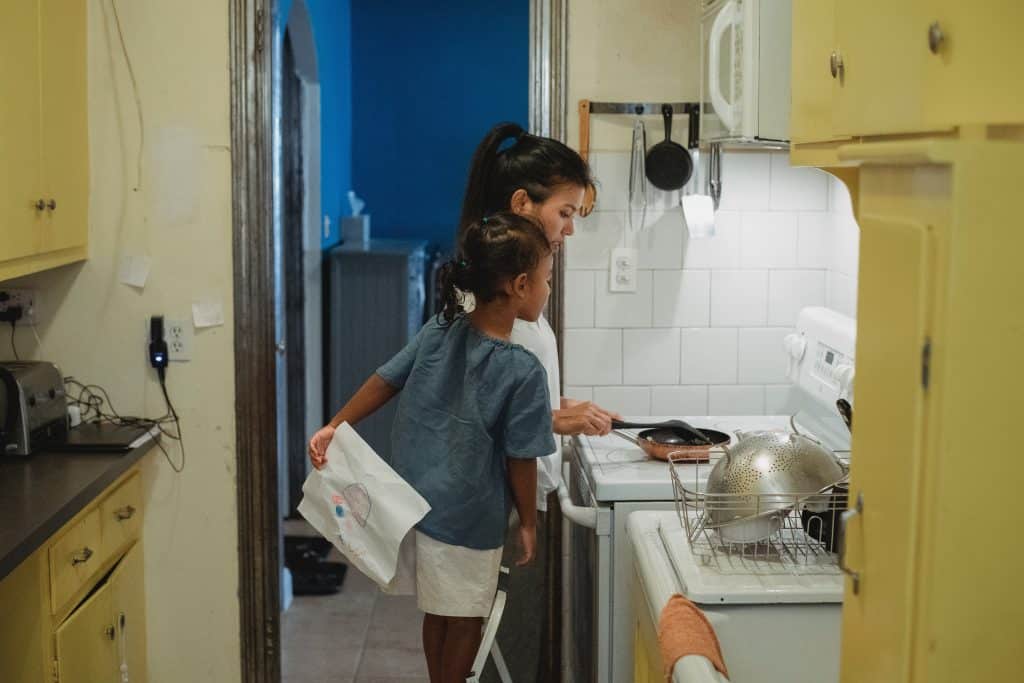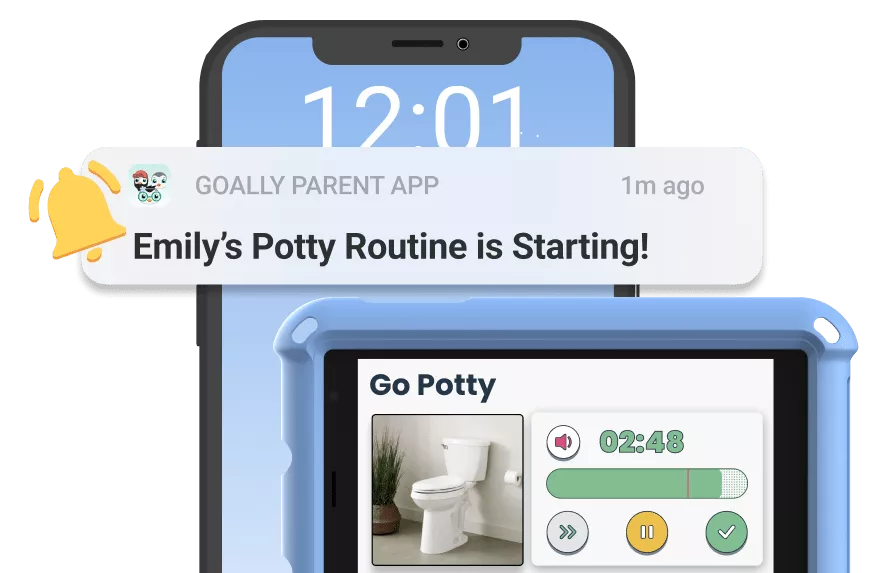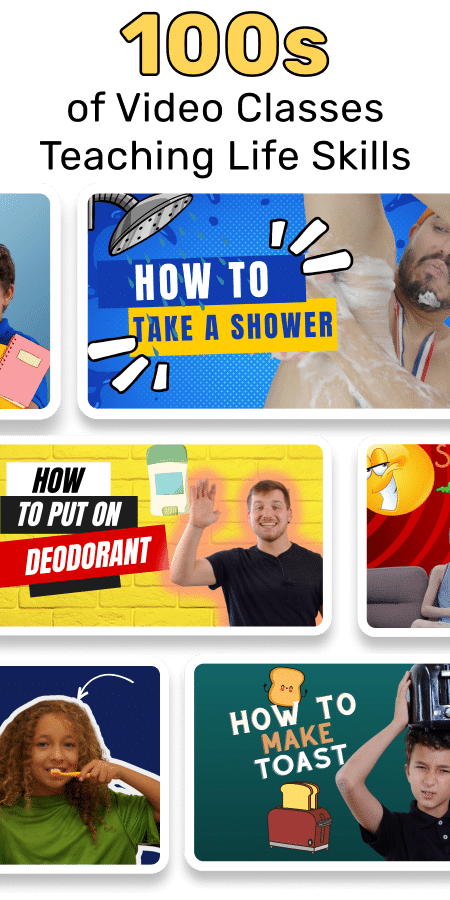Cooking with kids can be a delightful experience, but it also comes with its challenges—especially when it comes to safety. As much as I love watching kids get excited about helping in the kitchen, I know that teaching them stove and oven safety is a critical first step. Kids are naturally curious, and without the right guidance, that curiosity can lead to dangerous situations. That’s why it’s essential to teach them how to handle kitchen appliances safely. In this guide, I’ll walk you through practical steps to ensure your kids understand the importance of oven safety, from understanding the basics to mastering more advanced skills. Whether you’re dealing with a toddler who loves to watch you cook or an older child ready to take on more responsibility, these steps will help make your kitchen a safer place for everyone. And, to make it even easier, we’ve included a Goal Mine class video that your kids can watch to learn this skill independently.
Table of Contents
1. Start with the Basics: Understanding Heat and Danger
Before we dive into the nitty-gritty of stove safety, it’s crucial to lay the groundwork. I always start by helping kids understand the concept of heat and its potential dangers. This foundational knowledge sets the stage for all our future safety lessons.
Here’s how I break it down for the kiddos:
- Use visual aids: I often bring a heat-sensitive toy or color-changing mug to demonstrate how heat works.
- Explain “hot” vs. “cold”: We play a game where we sort household items into “hot” and “cold” categories.
- Introduce the concept of burns: I use gentle language to explain how heat can hurt our skin, often comparing it to a very strong “ouch.”
- Practice identifying heat sources: We go on a “heat hunt” around the kitchen, pointing out things that can get hot.

Read more: How to Heat Up Food in the Microwave
2. Establish Clear Kitchen Rules
Once kids grasp the basics of heat, it’s time to set some ground rules. In my experience, clear, consistent rules are the backbone of kitchen safety. I work with parents to create a set of easy-to-remember guidelines that kids can follow.
| Rule | Explanation | Kid-Friendly Reminder |
|---|---|---|
| No unsupervised kitchen time | Kids should always have an adult present in the kitchen | “Kitchen buddy time!” |
| Keep a safe distance from the stove | Establish a “safety zone” around the stove | “Respect the hot spot!” |
| Ask before touching | Always get permission before touching any kitchen items | “When in doubt, shout it out!” |
| Use oven mitts | Always use protection when handling hot items | “No bare hands on hot pans!” |
| Walk, don’t run | Encourage careful movement in the kitchen | “Slow and steady wins the race!” |
3. Teach Proper Stove and Oven Handling
Now that we’ve covered the basics and set some rules, it’s time to get hands-on with stove and oven safety. I always emphasize that this is a gradual process—we’re not expecting kids to become master chefs overnight!
Here’s how I break down stove and oven handling for different age groups:
Ages 2-4:
- Introduce the concepts of “hot” and “cold” knobs
- Practice turning knobs on and off with a toy stove
- Teach them to recognize the sound of a timer
Ages 5-7:
- Demonstrate how to use oven mitts properly
- Explain the different parts of the stove (burners, control panel)
- Introduce the concept of preheating the oven
Ages 8-10:
- Teach how to read oven temperatures
- Demonstrate safe ways to check if food is done
- Introduce basic cooking techniques under close supervision
4. Practice Safe Food Handling
Oven safety isn’t just about avoiding burns—it’s also about handling food safely. I always include this in my lessons because it’s an often-overlooked aspect of kitchen safety. Plus, it’s a great way to sneak in some science!
Here are some key points I cover:
- Handwashing: We make it fun by singing a 20-second song while scrubbing
- Cross-contamination: I use colored water to show how “germs” can spread
- Safe food temperatures: We use a food thermometer and treat it like a treasure hunt
- Proper storage: We play “food detective” to figure out what goes where in the fridge
5. Create a Kitchen Safety Kit
One of my favorite activities is helping families create their own kitchen safety kit. It’s a hands-on way to reinforce all the safety concepts we’ve covered, and kids love having their own special gear.
Here’s what I recommend including in a kid-friendly kitchen safety kit:
- Child-sized oven mitts
- A colorful timer
- Non-slip kitchen mat
- Plastic cutting board
- Safety scissors for food prep
- Fun, food-safe bandages
I encourage parents to let their kids decorate the kit container. It’s a great way to get them excited about kitchen safety!

Read more: How to Bake Cookies
6. Make It Fun: Games and Activities for Reinforcing Safety
Let’s face it—safety lessons can be a bit dry. That’s why I always incorporate games and activities to keep kids engaged. I’ve found that when learning is fun, the lessons stick much better.
Here are some of my go-to activities:
- “Hot Potato Safety Edition”: Pass around an object, and when the music stops, the person holding it has to say a kitchen safety rule
- “Safety Scavenger Hunt”: Hide safety items around the kitchen and have kids find them
- “Stove Top Twister”: Use a large paper “stove top” on the floor to practice safe movement around hot spots
- “What’s Wrong With This Picture?”: Show images of unsafe kitchen practices and have kids spot the issues
7. Lead by Example: Modeling Safe Kitchen Behavior
In all my years working with families, I’ve learned that kids are incredible mimics. They’re always watching, always learning. That’s why I stress to parents the importance of modeling safe kitchen behavior themselves.
Here’s what I encourage parents to do:
- Narrate your actions: “I’m turning the pan handle in so no one bumps it.”
- Use safety gear consistently: Don’t skip the oven mitts, even for quick tasks
- Practice what you preach: Follow all the safety rules you’ve set for your kids
- Admit and correct mistakes: If you slip up, acknowledge it and explain what you should have done
Remember, every moment in the kitchen is a teaching opportunity. By consistently demonstrating safe practices, you’re setting your kids up for a lifetime of kitchen confidence.

Goally | Best Videos to Teach Life Skills
Give your kid an independent future. Goally has 100+ video classes teaching life skills like “How to Choose a Restaurant,” “How to Interrupt Politely,” and “How to Get Ready for School.”
Goally takes kids on an adventure that includes interactive practice and checkpoints along the way! No web browsers, YouTube, or social media.
Teaching stove and oven safety to kids isn’t just a one-time thing—it’s an ongoing chat that grows as your kids do. Start with the basics, set clear rules, and make safety fun. That way, you’re not just stopping accidents; you’re giving your kids important life skills. The idea isn’t to make the kitchen off-limits, but to create a place where curiosity and safety go together. So, grab those mini oven mitts, get excited, and let’s raise a bunch of safe, confident little chefs!
Resources:
FAQs About How to Teach Oven and Stove Safety to Kids
What is Goally's approach to teaching oven safety to kids?
Goally uses task analysis to break down oven safety into simple, manageable steps, making it easy for kids to understand and follow.
How does Goally ensure kids understand the importance of oven safety?
Goally's video classes emphasize the importance of oven safety, explaining the potential dangers and how to avoid them in a kid-friendly manner.
Can Goally help my child learn oven safety independently?
Yes, Goally's video classes are designed to be engaging and easy to follow, allowing kids to learn oven safety independently
How does Goally reinforce the concept of oven safety?
Goally uses repetition and reinforcement in its video classes to ensure the concept of oven safety is firmly ingrained in kids' minds.
What are the key steps in teaching oven safety that Goally focuses on?
Goally focuses on three key steps: not touching the knobs or buttons, never touching the burners, and not opening the oven door.
This post was originally published on 10/19/2023. It was updated on 08/16/2024.

Hennah is an experienced writer and researcher, helping children with autism, ADHD, and other neurodivergent conditions. As a blog contributor for Goally, she combines her deep understanding of neurodiversity with practical advice, offering valuable insights to parents and educators.





